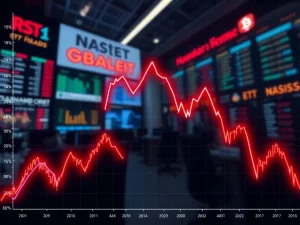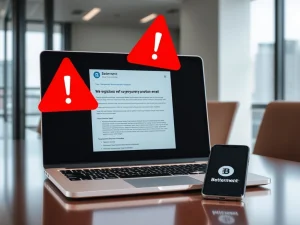Bitcoin Owner Redeems Shocking $10M Casascius Bar After 13 Years

In a rare move that highlights the evolution of cryptocurrency storage, a long-time Bitcoin holder recently transitioned their significant digital asset from a physical form to a modern digital wallet. This event involved a 100 BTC Casascius bar, an early and now iconic piece of Bitcoin history, which had been held offline for over a decade.
Unsealing History: The Casascius Bar
For many early adopters, owning Bitcoin wasn’t just about digital keys; it involved physical representations like the Casascius bar. These unique items, created by Mike Caldwell, embedded the private keys to access specific amounts of BTC under a tamper-evident seal. The user, known online as ‘John Galt’, shared their story of unsealing a 100 BTC Casascius bar purchased back in 2012 when Bitcoin’s price was below $100.
Initially, these physical coins and bars were seen as a novel way to hold and potentially trade Bitcoin, blending the tangible with the digital. Galt mentioned collecting them partly because they felt like a piece of potential history. Holding onto such a piece for 13 years meant its value soared dramatically.
From Physical Bitcoin to Digital Safety
The decision to move the 100 BTC from the physical Casascius bar to a hardware wallet was significant. With Bitcoin’s price around $104,000 at the time of the move in May, the value of the bar exceeded $10 million. While such a value increase might suggest a plan to sell, Galt clarified that the primary motivation was security.
Holding a physical asset worth millions comes with inherent risks, regardless of how securely it’s stored. Galt had kept the bar in a vault away from his home. However, the increasing value made the physical form feel less secure compared to the robust cryptographic protection offered by a dedicated hardware wallet. This move underscores a common trend among holders of large BTC amounts: prioritizing advanced digital security methods.
Why Not Sell the Physical Casascius Bar?
The idea of selling the Casascius bar intact was considered. For collectors, an unredeemed Casascius piece holds historical and numismatic value beyond just the embedded Bitcoin. However, finding a legitimate buyer for a single physical item containing over $10 million in BTC proved challenging as the value increased. Galt felt that redeeming the bar was akin to ‘destroying a piece of history,’ but the practical difficulties of selling it whole became insurmountable.
This highlights a unique challenge for owners of high-value physical Bitcoin – balancing the historical value of the object itself with the practicalities of security and potential liquidity of the underlying digital asset.
What’s Next for the 100 BTC?
Despite moving the substantial BTC amount to a hardware wallet, John Galt stated there were no immediate plans to cash out. Having held the Bitcoin for so long, the recent action was driven by a desire for enhanced safety rather than an urgent need for liquidity or sudden enrichment. This perspective resonates with many long-term holders who view their BTC as a generational asset or a store of value.
The existence of unredeemed Casascius items continues to fascinate the crypto community. Trackers show thousands of these physical Bitcoin pieces are still active, including some containing thousands of BTC, representing hundreds of millions of dollars locked away in these historical artifacts. Galt’s decision provides a rare glimpse into the considerations faced by individuals holding such unique and valuable pieces of Bitcoin’s early history.
Summary: A Shift from Tangible History to Digital Security
The redemption of a 100 BTC Casascius bar after 13 years marks a significant moment for its owner, driven by the practical need for enhanced security over preserving a physical relic. Worth over $10 million, the Bitcoin was safely transferred to a hardware wallet. This story illustrates the journey of early Bitcoin adoption, from collectible physical forms to the sophisticated digital security solutions used today, reminding us that while the technology evolves, the core principles of securing one’s assets remain paramount.










